Resources

We invite you to engage and follow the new round of Wabash Center’s "Stories from the Front (of the Classroom)” blog series. New entries will be posted every Tuesday from January 19 to September 20, 2016. Nancy Lynne Westfield (Drew...

During a recent webinar on the topic of leadership I offered a list of important skills related to the topic at hand. The list included something along the lines of the need for a leader to be "politically astute." That...
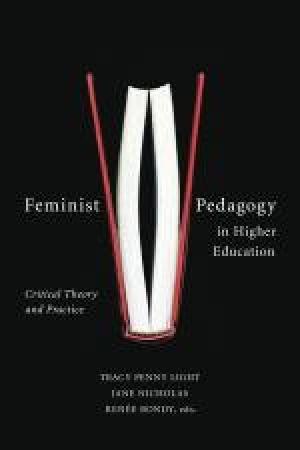
The articles in this anthology seek to establish both theoretical boundaries and practical guidelines for feminist practice in the classroom. The essays are, on the whole, very successful in regard to the first goal; however, this reviewer wishes there was more in the way of concrete advice, assignment structure, or assessment design throughout. Every essay in this collection clearly shares a passion for feminist pedagogy. Throughout, the authors share a clear understanding of feminist methodology and praxis and make clear their desires to transform and invigorate classroom experience through this knowledge and experience. In one of the more powerful examples of theory influencing the classroom, Jennifer Browdy de Herndandez discusses the ways in which Gloria Anzaldua’s concept of conocimiento (“awareness” or “knowledge”) is foundational to her course “African Women Writing Resistance.” While this work stands out in its clear discussion of feminist principles as foundational for teaching, each essay in the volume displays clear grounding in both feminist theory and pedagogical research. The editors are to be lauded for finding such a diverse group of authors with such uniformly strong methodological knowledge. However, the volume faltered in two ways. First, the discussion of method and theory, while a strength in many ways, became repetitive over the course of fifteen chapters and an introduction. It might have served the anthology better to have a methodological section toward the beginning of the volume that set the tone for the work as a whole. Application, course design, and even assessment sections that drew on the work of the previous scholars could have followed the preliminary discussion. Instead, the various contributors repeat many of the same methodological and theoretical preoccupations throughout: decentering, contextualizing, intersectionality, gender performance, and so forth. For those who read the volume beginning to end, this recitation of method and theory becomes unnecessarily repetitive. Second, this reviewer found the volume lacking in practical approaches to the classroom, particularly regarding assignment design and discussion processes. Several chapters mention the classroom, but few authors share their actual day-to-day work, assignments, or assessment data. For example, in the initially fascinating essay on a non-credit outreach humanities course (“Rethinking ‘Students These Days’: Feminist Pedagogy and the Construction of Students”) the authors spend the majority of the discussion on the social location and needs of the participants. This is crucial information, to be sure, and welcomed by the reader. However, when it came to the class itself the authors offer no observations about discussion practices, relevant assignments, or course assessment. The reader was left to wonder: how do they achieve such positive results? And how could I, with similar students, replicate their achievements? Many of the other essays similarly offer no discussion of the course or courses as they were practiced; instead, authors employ vague language about discussions, stakeholders, or their experiences of the course as a whole. From the perspective of a reader, and fellow feminist teacher, I was left at a loss as to how to change my courses now to enact in the classroom the strong methodological framework displayed throughout this volume in any practical way. The clear exception, in regard to practical advice for transforming assignment design and assessment, was the chapter by Linda Briskin, “Activist Feminist Pedagogies: Privileging Agency in Troubled Times.” This essay emphasizes the importance of moving from a “caring for” or charity model of service learning to a community-based model. The theoretical framework here is spot-on, emphasizing context and avoiding the patriarchal and colonialist subtext of charity-focused work. However, Briskin also includes three sets of inserts for extra information concerning writing assignments and questions from the course and follows these with a potential model for analysis of these assignments to show student learning. As a teacher, I learned more from this chapter – and certainly more that I can put into immediate practice – than from any other work in the volume. The discipline of feminist pedagogy, in both its theoretical and practical forms, is a promising horizon for transforming and liberating higher education classrooms. While this volume did not offer as many practical tools as it might have, the reviewer was heartened to read of the broad support and sophisticated theoretical grounding in feminist pedagogy from among its authorship.

David Greene’s Unfit to Be a Slave sets out to address the role that education should play in society. His argument rests on the assumption that current educational opportunities are limiting or exploitive of adult working students. He says, “today, the corporations and financiers benefit from the ignorance and silence of the population. The less information and understanding people have, the more they can be misled and controlled” (71; this criticism is borne out in more detail in chapters 4 and 5). The current trend towards “job skills education” is elicited as a prime example of inadequate higher educational opportunities which serve the interests of corporations and not students. Greene argues that “the duty of an educator is to broaden the horizons of learning and challenge the limitations they [students] face” (53). Thus, for Greene, successful education arrives at the “maximal development of intellect, understanding, culture, and awareness of the world around us” (9). Further, effective education must aim to develop students as leaders, and empower them for success, rather than giving them only skills requisite for low-wage or menial employment. In an effort to ameliorate these problems, Greene presents an outline of a pedagogical system built on Paulo Freire’s idea of “problem posing education.” This model starts with the dissolution of customary boundaries between teacher and student, recognizing that both students and teachers need to learn, and both can teach. Greene builds on this model, advocating that education ought to be focused on the collective development of a set of central literacies: functional literacy, civic or political literacy, health literacy, environmental literacy, and financial and economic literacy (22). Each of these literacies includes competencies for both individual and corporate ends, and Greene’s argument posits they can be gained through what he calls “central tools,” which are: listening, the recognition of pre-existing student knowledge, discussions about real problems faced in daily life, and the advocation and organization of specific actions to combat those problems (71-77). Greene also strongly suggests that education not be confined to the classroom. He contends that higher education must empower students to change society and he provides examples from his own teaching that underscore this need. Unfit to Be a Slave does not contain any quick fix techniques to import into your classroom to move towards a more effective classroom experience, rather it presents an idea of education that is much broader and more holistic. Throughout the book Greene strives to promote a broad educational model that is directed not to the acquisition of job skills themselves, but to an increased ability of students to function well in society and to live well. The book focuses on the plight of adult workers, and takes particular pains to explain the oppressive economic and social factors working against the thriving of adults in the workforce. Personal politics aside, faculty are reminded that life exists outside of the ivory tower of academia, and that student experience informs their perspectives on theoretical matters, and can be marshaled as an asset to an effective learning experience for both the instructor of record and the students enrolled in the course.
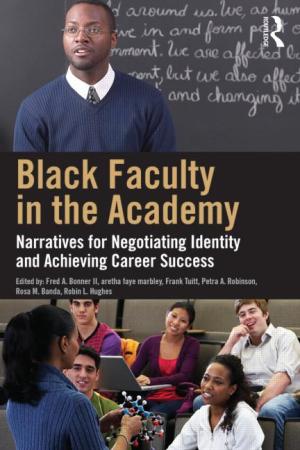
The editors and selected contributors provide cogent insights on navigating academic environments as faculty of color. Critical Race Theory (CRT) is a conceptual and methodological lens to identify issues of racial incongruity (1). The strength of this volume of 13 chapters is the use of first-person Scholarly Personal Narratives (SPN) by contributing black scholars to analyze particular experiences and modes for survival, if not reform in educational institutions (3). In the introduction, editors Truitt and Bonner review the evolution of CRT to conceptualize “core thematic trends” (4) that collectively structure the narrative content and divide the volume into three parts. Part 1 is titled “Black Faculty: Navigating Daily Encounters with Racism.” Chapters 2 through 5 are narratives on interpersonal experiences in institutional climates. In chapter 2, Giles details CRT to analyze presumptive behaviors encountered since his formative years to his current professorial appointment. Moore focuses on racial microaggressions in chapter 3 (24) to note environmental similarities of his upbringing in a predominately white community and his exposure to social systems in the work environment at a predominately white academy. Lewis co-authors chapter 4 to highlight “insider-outsider experiences” (33) as a British black man, while Helm highlights her duality in America as black female navigating racialized gender stereotypes that undermine professional credibility (35). In chapter 5, Shavers, Butler, and Moore cite “cultural taxation” (42), a phenomena of commodification risks for underrepresented black faculty confounded by excessive service project requirements as token institutional representatives. In Part II, “Black Faculty, Meaning Making through Interdisciplinary and Intersectional Approaches,” chapters 6 through 9 offer multidisciplinary intersectional approaches to recognize formal institutional rules and navigate informal expectations. Five contributors to chapter 6 – marbley, Rouson, Li, Huang, and Taylor – use a multiple theoretical lens to assess microaggression in performance-compliance to diversity expectations, parity of scholarship praxis, and tenure requirements. Croom and Patton overlay “critical race feminism” (66) onto CRT analysis in chapter 7 to identify dynamics that black female academicians encounter from black and white colleagues. Similarly, in chapter 8, Andrews details institutional macroaggressions and interpersonal microaggressions (80) that hinder female scholars’ inclusion in tenure-track aspirations unless support of professional identity and authenticity is cultivated. Stewart shares nuanced sexuality challenges in chapter 9 as an “outsider-within” (95) where her triadic identities, black, female, and queer are stereotyped tropes for discrimination and invisibility in the academy. Finally, Part III, “Back Faculty, Finding Strength through Critical Mentoring of Relationships” includes that focus on mentor relationships as supportive modes of self-reflection and networking. In chapter 10, Flowers relays a critical need for candid self-reflection with trusted allies as mentors outside institutions if not found within. Smith asserts in chapter 11 that tenure does not guarantee collegial inclusion, respect, or appointment to leading roles; still, attentiveness to self-esteem, persona perceptions, and cultivating allied mentors helps to build critical social capital (117). Finally, chapters 12 and 13 focus on developing mentor relationships with students as Bonner recalls mentor influences as a student that inform his thematic roles as a faculty mentor to students (123). In the final chapter, Tomlinson-Clarke also urges faculty-student relationship with relational mentoring lessons as a graduate student in a historically black college (HBCU) and as a doctoral student in a predominately white university (PWI). In summary, Black Faculty in the Academy is not a prescriptive behavioral guide of dos and don’ts; rather, the diverse analyses of lived experiences with recommendations provide avenues for readers to construct reflective assessment of present individualized situations. As an African American professor, I resonated with the narratives as discernment tools for success. The book also provides a starting point for collective institutional discourse; however, in my opinion, the volume would benefit from a section of narratives by non-black faculty who acknowledge critical race theory issues that require discourse in institutional settings where non-black colleagues might otherwise be defensive to the critique of the book’s black contributors. Nevertheless, for new faculty of color as the likely primary readers, this volume offers powerful insights of CRT to raise awareness and encourage development of contextual navigation strategies.
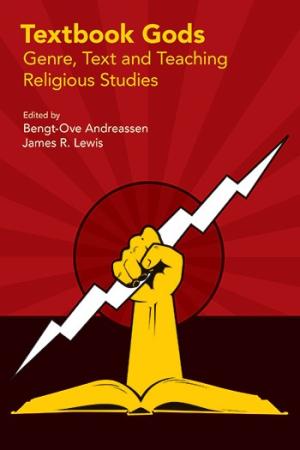
Textbook Gods is a collection of essays by predominantly European scholars of religion on the use of textbooks in primary, secondary, and post-secondary educational settings. Textbooks are understood to be books written primarily for classroom teaching that convey “key knowledge” within a given academic discipline (2). As such, textbooks generally present disciplinary knowledge as stable, firmly established, and definitive. The essays in this volume wrestle, first, with the problems of bias and essentialism in such authoritative, institutionally-sanctioned books. By extension, they also consider the impact of religious studies textbooks in reproducing knowledge of religion in the public sphere. Satoko Fujiwara argues in her essay, for instance, that the religion textbooks used in secular Japanese public schools prioritize world religions over ethnic religions and provide monothetic and essentializing accounts of these religions (for example, Christianity is love, Buddhism compassion, Islam obedience). Likewise, in their contributions James Lewis and Carole Cusack criticize textbooks for validating students’ ethnocentric prejudices about sub-Saharan African religions and aboriginal Australian religions. In a somewhat different vein, Bengt-Ove Andreassen critiques the way that introductory Norwegian textbooks present “religion” as a positive, universal phenomenon that is necessary for human fulfillment and flourishing. Other essays have a more methodological focus, discussing the ways that scholars of religion can assess religion textbooks, both as teaching resources and as indices of the status of scholarship on religion. Katharina Frank outlines a theoretically-informed methodology for assessing the ways that a new Swiss world religions textbook frames the phenomenon of religion. Mary Hayward surveys the use of visual aids in four textbooks that are used in England’s secondary school religious education courses, tabulating types of images and their relation to the text. She calls for a stronger interrelation between text and image because the privileging of text mirrors the privileging of the intellectual over the material in the study of religion. The essays in this volume are generally of good quality: they are well written, they fully contextualize the textbooks that they discuss, and they engage contemporary debates in the scholarship of religion (for example, on the public role of religion in secularizing societies; on the utility of “religion” as an analytical category). This volume should not be seen as an aid for teachers of religion who are considering which textbooks to use in their classes. Though the essays in it discuss many different textbooks at length, the primary topic is not their specific merits and demerits, but rather the role of textbooks as a genre in the production of public knowledge of religion. I would strongly recommend this book for experienced scholar-teachers who are reconsidering how they use textbooks, or even if they should use textbooks at all. The range of materials covered by the essays, and the diversity of opinions they present, make Textbook Gods a valuable resource.
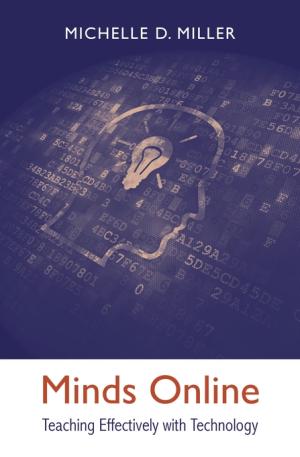
Do students learn as well online as they do in the face-to-face classroom? Miller argues not only that they can, if the instruction is well-designed, but also that online tools and resources are uniquely able to deliver instructional experiences that take advantage of the innate properties of human learning. “[W]hat technology allows us to do,” she claims, “is amplify and expand the repertoire of techniques that effective teachers use to elicit the attention, effort, and engagement that are the basis for learning” (xii). Miller realizes that many faculty do not share her positive view of technology in instruction, however. She opens her book by targeting that resistance with well-reasoned and supported counterarguments: in chapter 1, she counters the fear that teaching with technology is a faddish, passing phenomenon with a recounting of its potential lasting value to both administrators and instructors; in chapter 2, she presents evidence for the effectiveness of online learning and against typical worries about its effects on students; and in chapter 3, she debunks several major myths about learners and computing that have made instructors skeptical or misdirected their efforts. Having assuaged common concerns about instructional technology, Miller moves on in chapters 4 through 8 to discuss current psychological theory on the functioning of attention, memory, reasoning, the effect of multimedia elements on learning and motivation, paired in each case with practical strategies to help online instruction optimize these elements. Her evidence is compelling even as it is presented at an accessible level for an audience with little to no background in psychology. Finally, in chapter 9, she presents possibly the most valuable portion of the entire work: a demonstration of all of her principles in practice, in the form of a sample design process and syllabus annotated to show their use of cognitive best practices. The value of Miller’s overall guidance is only slightly undermined by its fuzzy definition of learning for these purposes. Even as she describes how technology can impact learning, learning itself seems to be equated variously with retention, course completion, grades, and reasoning at different points in the text. In all fairness, each of these measures may well suffice at times for the instructor of a large introductory psychology class, which is the primary use case Miller discusses in this book; and to her credit, she does acknowledge the limitations of each of these as measures of student learning, and also explicitly notes the need for learning experiences that foster deep critical thought, and that engage students at the highest levels of Bloom’s Taxonomy. Nonetheless, a more intentional definition of what is meant by learning would do a great deal to strengthen her argument that online resources can support it. Despite this limitation, however, this book is a useful, readable guide to an area of instruction whose study is still in its early stages, unusually and gratefully practical even while firmly grounded in theory. It provides a valuable reframing of, and supplement to, the core principles of instructional design, and I expect it to inform my online and even face-to-face instructional practice for some time to come. I would recommend it for any academic library and for the personal collection of any instructor teaching, or considering teaching, in an online or blended environment.
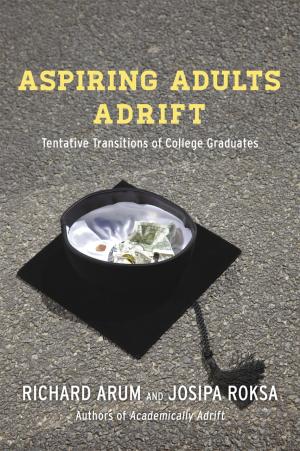
Aspiring Adults Adrift: Tentative Transitions of College Graduates, by Richard Arum, professor in the Department of Sociology at NYU and senior fellow at the Bill and Melinda Gates Foundation, and Josipa Roska, associate professor of sociology and education and associate director of the Center for Advanced Study of Teaching and Learning in Higher Education at the University of Virginia, is the much-anticipated sequel to the authors’ celebrated, often cited, and hotly debated Academically Adrift: Limited Learning on College Campuses (2011), which documented in great detail the academic gains – and stagnation – of some 2,300 students of traditional college age enrolled at a range of 4-year college and universities. In the 2011 report, students were measured on gains in critical thinking, analytical reasoning, and other “higher level” skills taught at college, and the results were not encouraging. The most often-cited findings included: 45 percent of students “did not demonstrate any significant improvement in learning” during the first two years of college; and 36 percent of students “did not demonstrate any significant improvement in learning” over four years of college. The main culprit for students’ lack of academic progress, the authors claimed, is lack of rigor, particularly with respect to critical reading and analytical writing. Aspiring Adults Adrift tracks the same cohort of undergraduates out into the working world into (what should be) adulthood, and documents their struggles to make the transition to traditional adult roles. The results of this follow-up study are no more inspiring: 24 percent of graduates living at home with their parents; 74 percent of graduates receiving financial support (in some cases quite substantial) from their families; and 23 percent of graduates in the labor market who are unemployed or underemployed. Despite these discouraging findings, however, the authors report that these graduates are quite optimistic about their futures, 95 percent of them reporting that they expect their lives to be better than their parents. The authors set out to determine what accounts for this optimism. One compelling argument put forward by Arum and Roksa is a theory given recent prominence by social psychologist Jeffrey Arnett in his notion of “emerging adulthood,” a new demographic identified as the period between eighteen and twenty-five years of age, a period of “self discovery” and “self exploration” during which adolescence is extended; a period in which these aspiring college-educated young adults struggle with identity exploration, instability, and self-focus, often do not live independently, are un- or underemployed, and do not have the income to be financially self-sufficient. Arum and Roksa put the blame, fairly or unfairly, largely on institutions of higher education, and their commitment to “promoting a personnel perspective that celebrate(s) self-exploration and social well-being” (11) – put more bluntly, that caters to the ethos of consumer society, and a broader “cultural adoption of a therapeutic ethic” (9): “both the students and institutions have put such a high focus on social engagement as a key component of higher education that the students have come to believe that it’s those skills and networks that are going to be critically important for their lifelong success.” The evidence, however, suggests otherwise; that the emphasis on social “engagement” at the expense of academic rigor is not achieving these results. “Widespread cultural commitment to consumer choice and individual rights, self-fulfillment and sociability, and well-being and a broader therapeutic ethic leave little room for students or schools to embrace programs that promote academic rigor” (136). It is, the authors contend, ultimately a mutually-reinforcing race to the bottom: “This may reflect the self-centered nature of emerging adulthood,” they write, “or the education system’s decreasing emphasis on preparing individuals for participating in a democratic society. Whatever the underlying causes of this tendency, colleges could adopt a more productive role in the development of values and dispositions for greater engagement with the world at large” (113). In essence, the responsibility is ours, as educators, to reject consumer satisfaction as “a worthy aim for colleges and universities” and “do more to help students develop the attitudes and dispositions they need to reach their aspirations” (134). Wherever the solutions lie to the oft-cited “crisis in higher education,” the authors of Aspiring Adults Adrift have once again contributed significantly to the centrality of educator-led reform.
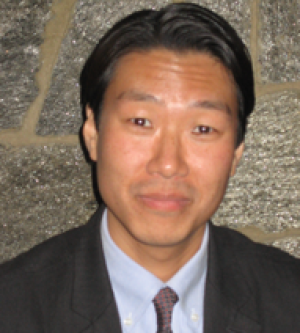
KC Choi Associate Professor, Department of Religion Seton Hall University I was horrified to discover that Dylann Roof regarded Asians as inherently racist and thus possible allies to white supremacist causes. That opinion received little media attention, except for spotty clusters throughout social networking sites. And while Roof’s assessment of Asians is nothing short of galling, I also found them disquieting; it was the words of a white supremacist mad man that had uncomfortably recalled a specific set of experiences in my course “Race, Politics, and Theology.” Students in my course have mirrored the relative racial and ethnic diversity of...

Theological schools and seminaries have been relative latecomers to rigorous practices of educational assessment. There are varied and plausible reasons for that which "make sense." However, in the current age of higher accountability to accrediting agencies, stakeholders, and educational consumers,...
Wabash Center Staff Contact
Sarah Farmer, Ph.D
Associate Director
Wabash Center
farmers@wabash.edu